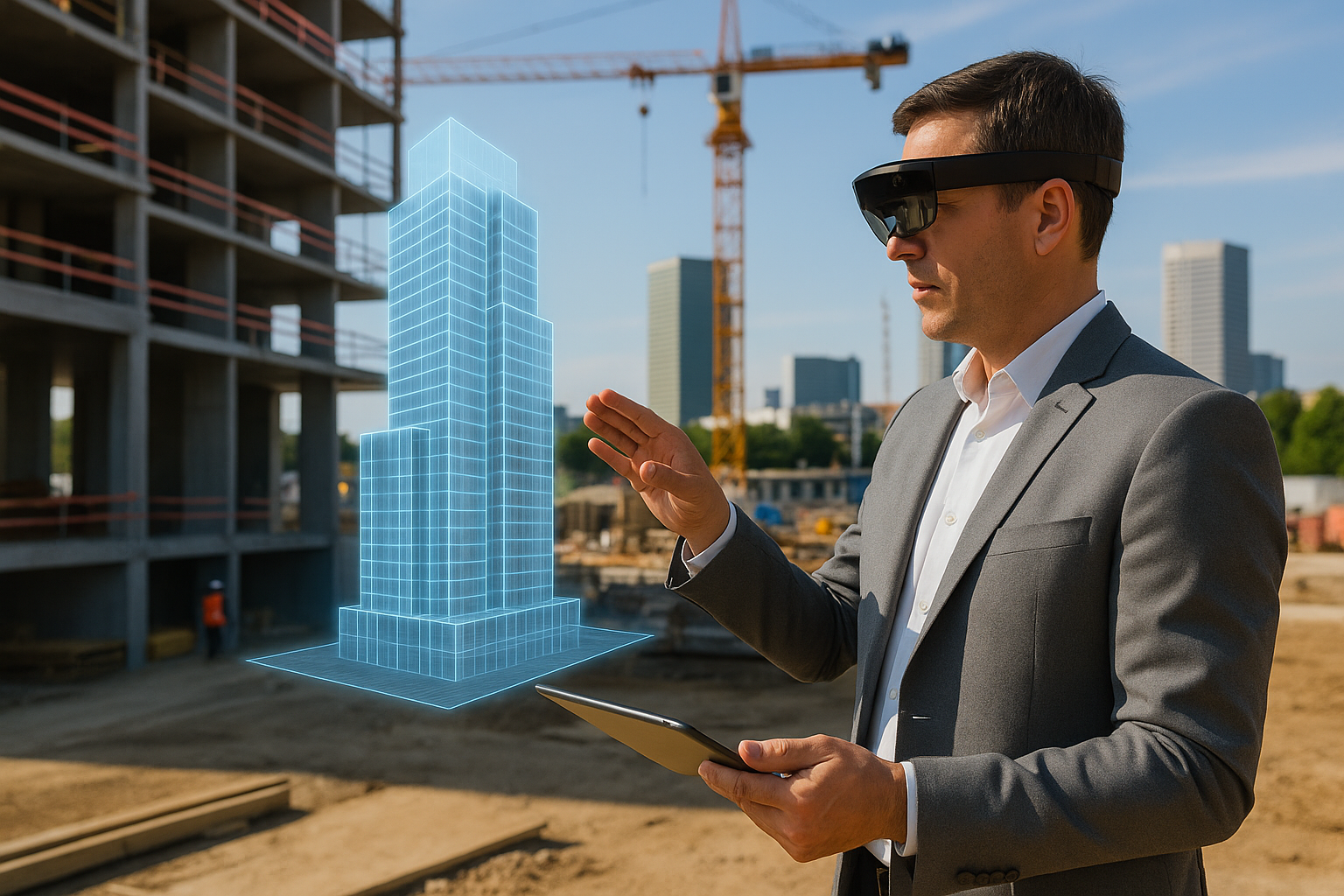AR in modern architecture is transforming the entire design process, bridging the gap between abstract concept and built reality. For decades, architects have relied on drawings, models, and renderings to communicate ideas—but these often leave clients and contractors struggling to fully understand the vision. Augmented reality (AR) changes that by placing digital models directly into real-world contexts, making design intent clear from the very beginning.
Whether it’s explaining a conceptual sketch, aligning construction workflows, or validating sustainability choices, AR allows architects and stakeholders to see, experience, and interact with design in ways that were impossible before.
What Is AR in Modern Architecture?
AR in modern architecture refers to the use of augmented reality technologies—such as mobile devices, AR glasses, or tablets—to overlay digital models onto physical environments. This enables users to walk through proposed spaces, view scale and proportions, and even interact with design elements in real time.
Unlike static images or VR headsets, AR blends physical and digital, ensuring the architectural experience remains connected to real-world conditions.
How AR Supports Every Stage of the Design Process
1. Early Conceptual Design
AR makes it possible to move beyond 2D sketches. By overlaying early massing models onto a site, architects can communicate their intent quickly, helping clients visualize potential forms and spatial arrangements.
2. Client Engagement and Approvals
Clients often find technical drawings confusing. With AR, they can walk through their future home, office, or civic building, experiencing scale and circulation firsthand. This builds trust, speeds approvals, and reduces redesign cycles.
3. Collaborative Design Development
By enabling multi-user AR sessions, design teams, engineers, and consultants can review models simultaneously, no matter where they are. This fosters collaboration and ensures that all systems align with architectural intent.
4. Construction Documentation and Execution
On job sites, AR is used to validate measurements, identify clashes, and guide workers in aligning construction with the approved design. Contractors can view overlays of HVAC systems, walls, or structural elements to ensure accuracy.
Benefits of AR in Modern Architecture
- ✅ Enhanced visualization of concepts and spaces
- ✅ Reduced risk of miscommunication between architect and contractor
- ✅ Faster project approvals from clients and municipalities
- ✅ Lower construction waste and rework costs
- ✅ Improved sustainability outcomes through accurate simulations
Case Study: AR on a Mixed-Use Development
In a recent project, an architectural firm used AR to guide the design of a mixed-use tower. AR helped demonstrate shadow studies for city officials, show interior layouts to prospective tenants, and align contractors on building systems installation. The project cut decision-making time by 25% and avoided thousands of dollars in rework by catching errors before they occurred.
The Role of AUGmentecture
AUGmentecture makes AR integration seamless for architects and designers. Its platform supports:
- Easy model uploads from Revit, SketchUp, and Rhino
- Markerless AR model placement
- Cloud-based sharing with clients and consultants
- Version switching to compare design alternatives
By lowering the barriers to entry, AUGmentecture ensures that AR in modern architecture becomes a daily tool rather than an occasional experiment.
Learn more about architectural innovation at the American Institute of Architects →
Future Outlook: AR as the Standard
The next generation of architectural practice will see AR deeply integrated into building information modeling (BIM), energy simulation, and smart construction. As AR hardware becomes lighter and more accessible, every architect, client, and builder will expect to use AR as a standard part of the workflow.
Conclusion
AR in modern architecture is not a distant vision—it’s here now. By improving communication, reducing waste, and aligning stakeholders across the entire lifecycle, AR ensures that architecture in the 21st century is smarter, faster, and more sustainable.




